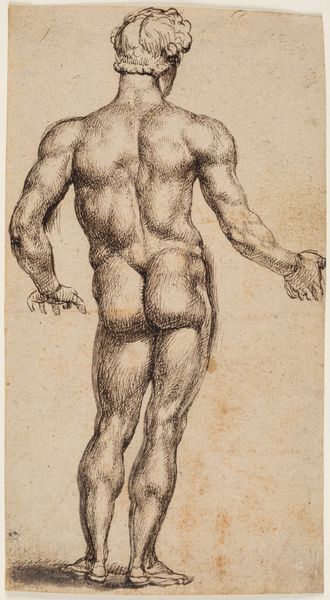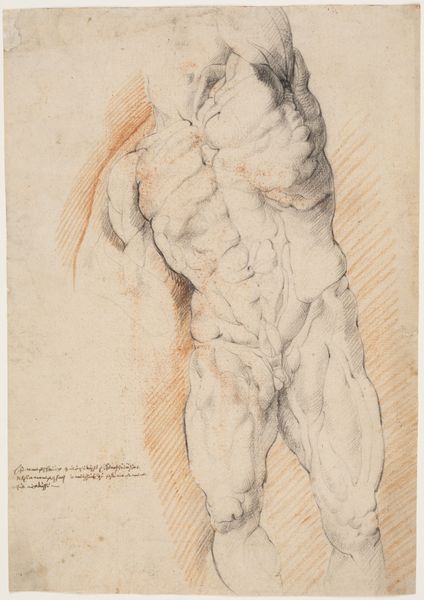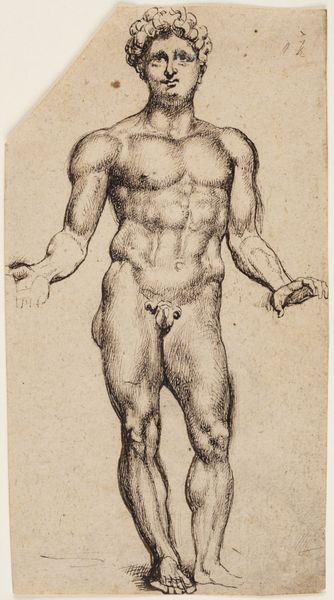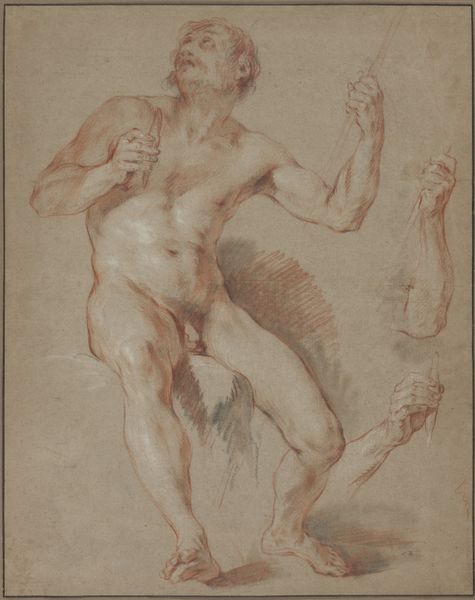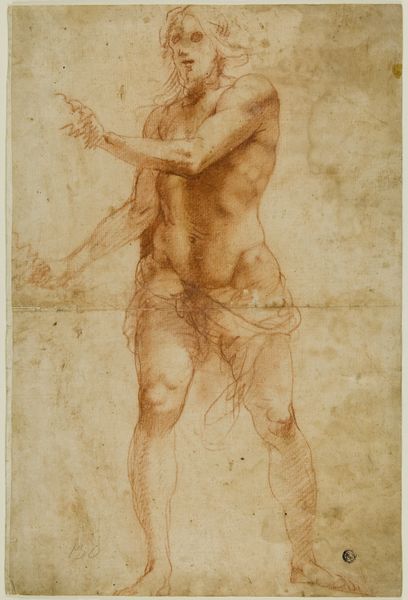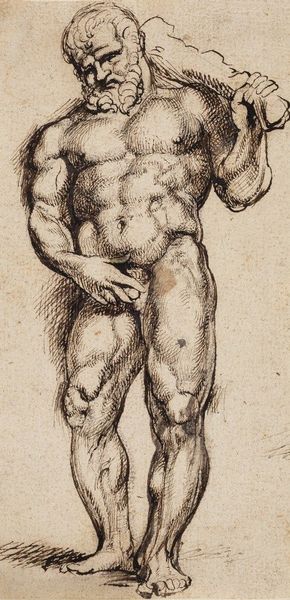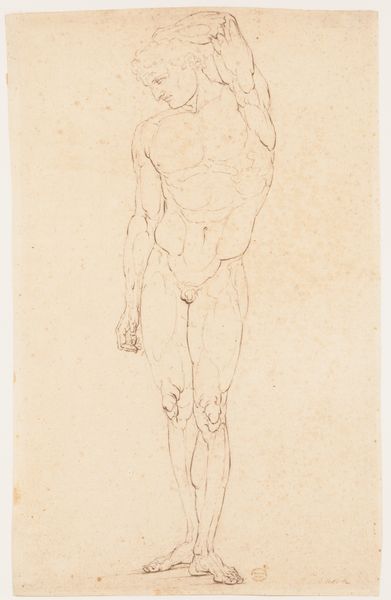
A Fisherman ("Seneca"). Front view of the antique statue slightly turned to the left 1628 - 1630
0:00
0:00
drawing, pencil
#
portrait
#
drawing
#
baroque
#
charcoal drawing
#
figuration
#
pencil drawing
#
pencil
#
portrait drawing
#
academic-art
Dimensions: 382 mm (height) x 289 mm (width) (bladmaal)
Curator: Here we have Willem Panneels' drawing, "A Fisherman ("Seneca"). Front view of the antique statue slightly turned to the left," created between 1628 and 1630. The piece is held at the SMK, the Statens Museum for Kunst. Editor: The immediate impact is striking. It's powerful in its raw depiction of the human form. The pronounced musculature, the sinews, the... absence of a face... it evokes a real sense of vulnerability despite the physical strength. Curator: Indeed. Panneels, a student of Rubens, was deeply engaged with the classical ideal but also part of a network that studied anatomy. It's not just about replicating classical forms, but also dissecting and understanding the human body as a kind of social project. Editor: Absolutely. Think about who had access to such studies, the power dynamics inherent in who gets to look and who gets to be looked at. And labeling him a "fisherman," while also associating him with Seneca… it’s a complex layering of identity and meaning. Is it about labor, philosophy, or a coded commentary on something else entirely? Curator: The Baroque style, with its drama and intensity, is palpable here. But beyond that, there’s a documentary aspect; Panneels meticulously captured the texture of the statue through the media of pencil and charcoal. His dedication created this work, and ensured that many others have continued to gain insights into classical sculpture via his studies. Editor: The academic art approach of rigorously copying classical models also perpetuated certain ideals. But what about the voices and bodies absent from these historical records? Where are the drawings of the unidealized, of those who didn’t fit within the narrow confines of classical beauty? It compels us to confront these omissions, these gaps in art history. Curator: That's a valuable point. The "Seneca" association, perhaps, signals a contemplation on mortality and moral fortitude through this very imperfect representation. Editor: It’s a compelling conversation starter, prompting us to question not only what is presented, but what is deliberately—or unconsciously—left out of the artistic canon. It makes one think about how we build monuments today and how these will affect societies and people. Curator: I agree; reflecting on the absences is precisely the kind of discourse historical artwork like this can foster today. Editor: It leaves you wondering who this person really was beyond the stone and the title. A very provocative, complicated drawing.
Comments
No comments
Be the first to comment and join the conversation on the ultimate creative platform.

